
End of mission for Cassini–Huygens on September 15, 2017
End of mission for Cassini–Huygens: The Grand Finale
After two decades in space, NASA's Cassini spacecraft has ended its remarkable journey of exploration. Having expended almost every bit of the rocket propellant it carried to Saturn, operators deliberately plunged Cassini into the planet to ensure Saturn's moons remain pristine for future exploration—in particular, the ice-covered, ocean-bearing moon Enceladus, but also Titan, with its intriguing pre-biotic chemistry.
Beginning in 2010, Cassini began a seven-year mission extension in which it completed many moon flybys while observing seasonal changes on Saturn and Titan. The plan for this phase of the mission was to expend all of the spacecraft's propellant while exploring Saturn, ending with a plunge into the planet's atmosphere. In April 2017, Cassini was placed on an impact course that unfolded over five months of daring dives—a series of 22 orbits that each passed between the planet and its rings. Called the Grand Finale, this final phase of the mission brought unparalleled observations of the planet and its rings from closer than ever before.
On Sept. 15, 2017, the spacecraft made its final approach to the giant planet Saturn. But this encounter was like no other. This time, Cassini dived into the planet's atmosphere, sending science data for as long as its small thrusters could keep the spacecraft's antenna pointed at Earth. Soon after, Cassini burned up and disintegrated like a meteor.
To its very end, Cassini was a mission of thrilling exploration. Launched on Oct. 15, 1997, the mission entered orbit around Saturn on June 30, 2004 (PDT), carrying the European Huygens probe. After its four-year prime mission, Cassini's tour was extended twice. Its key discoveries included the global ocean with indications of hydrothermal activity within Enceladus, and liquid methane seas on Titan.
And although the spacecraft may be gone, its enormous collection of data about Saturn - the giant planet itself, its magnetosphere, rings and moons—will continue to yield new discoveries for decades.
NASA / Wikipedia / Space.com / EarthSky.org
/ End of mission for Cassini–Huygens on September 15, 2017(YouTube) 

World War II: Battle of Britain - The climax when the Royal Air Force shoots down large numbers of Luftwaffe aircraft on September 15, 1940
World War II: Battle of Britain - The climax when the Royal Air Force shoots down large numbers of Luftwaffe aircraft:
The Battle of Britain reaches its climax when the Royal Air Force (RAF) downs 56 invading German aircraft in two dogfights lasting less than an hour. The costly raid convinced the German high command that the Luftwaffe could not achieve air supremacy over Britain, and the next day daylight attacks were replaced with nighttime sorties as a concession of defeat. On September 19, Nazi leader Adolf Hitler postponed indefinitely “Operation Sea Lion”–the amphibious invasion of Britain. Although heavy German aid raids on London and other British cities would continue through spring 1941, the Battle of Britain was effectively won.
In May and June 1940, Holland, Belgium, Norway, and France fell one by one to the German Wehrmacht, leaving Great Britain alone in its resistance against Hitler’s plans for Nazi world domination. The British Expeditionary Force escaped the continent with an impromptu evacuation from Dunkirk, but they left behind the tanks and artillery needed to defend their homeland against invasion. With British air and land forces outnumbered by their German counterparts, and U.S. aid not yet begun, it seemed certain that Britain would soon follow the fate of France. However, Winston Churchill, the new British prime minister, promised his nation and the world that Britain would “never surrender”, and the British people mobilized behind their defiant leader.
On June 5, the Luftwaffe began attacks on English Channel ports and convoys, and on June 30 Germany seized control of the undefended Channel Islands. On July 10–the first day of the Battle of Britain according to the RAF–the Luftwaffe intensified its bombing of British ports. Six days later, Hitler ordered the German army and navy to prepare for Operation Sea Lion. On July 19, the German leader made a speech in Berlin in which he offered a conditional peace to the British government: Britain would keep its empire and be spared from invasion if its leaders accepted the German domination of the European continent. A simple radio message from Lord Halifax swept the proposal away.
Germany needed to master the skies over Britain if it was to safely transport its superior land forces across the 21-mile English Channel. On August 8, the Luftwaffe intensified its raids against the ports in an attempt to draw the British air fleet out into the open. Simultaneously, the Germans began bombing Britain’s sophisticated radar defense system and RAF fighter airfields. During August, as many as 1,500 German aircraft crossed the Channel daily, often blotting out the sun as they flew against their British targets. Despite the odds against them, the outnumbered RAF flyers successfully resisted the massive German air invasion, relying on radar technology, more maneuverable aircraft, and exceptional bravery. For every British plane shot down, two Luftwaffe warplanes were destroyed.
At the end of August, the RAF launched a retaliatory air raid against Berlin. Hitler was enraged and ordered the Luftwaffe to shift its attacks from RAF installations to London and other British cities. On September 7, the Blitz against London began, and after a week of almost ceaseless attacks several areas of London were in flames and the royal palace, churches, and hospitals had all been hit. However, the concentration on London allowed the RAF to recuperate elsewhere, and on September 15 the RAF launched a vigorous counterattack.
Prime Minister Churchill was at the underground headquarters of the RAF at Uxbridge that day and watched as the English radar picked up swarms of German aircraft crossing over British soil. The British Spitfires and Hurricanes were sent up to intercept the German warplanes and met them in a crescendo of daring and death. When it appeared that the RAF’s resources were exhausted, Churchill turned to Air Vice-Marshal Keith Park and asked, “What other reserves have we?” Park replied, “There are none”, but then, fortunately, the German planes turned and went home.
Fifty-six German planes were shot down that day, though the number was inflated to 185 in British newspapers. Britain had lost 40 planes but denied the Luftwaffe air supremacy. There would be no German invasion of Britain. The Battle of Britain, however, continued. In October, Hitler ordered a massive bombing campaign against London and other cities to crush British morale and force an armistice. Despite significant loss of life and tremendous material damage to Britain’s cities, the country’s resolve remained unbroken. In May 1941, the air raids essentially ceased as German forces massed near the border of the USSR.
By denying the Germans a quick victory, depriving them of forces to be used in their invasion of the USSR, and proving to America that increased arms support for Britain was not in vain, the outcome of the Battle of Britain greatly changed the course of World War II. As Churchill said of the RAF fliers during the Battle of Britain, “Never in the field of human conflict was so much owed by so many to so few.”
Manston History.org UK / Wikipedia / Encyclopedia Britannica / BBC / The Telegraph UK
/ World War II: Battle of Britain - The climax when the Royal Air Force shoots down large numbers of Luftwaffe aircraft on September 15, 1940 (YouTube) 
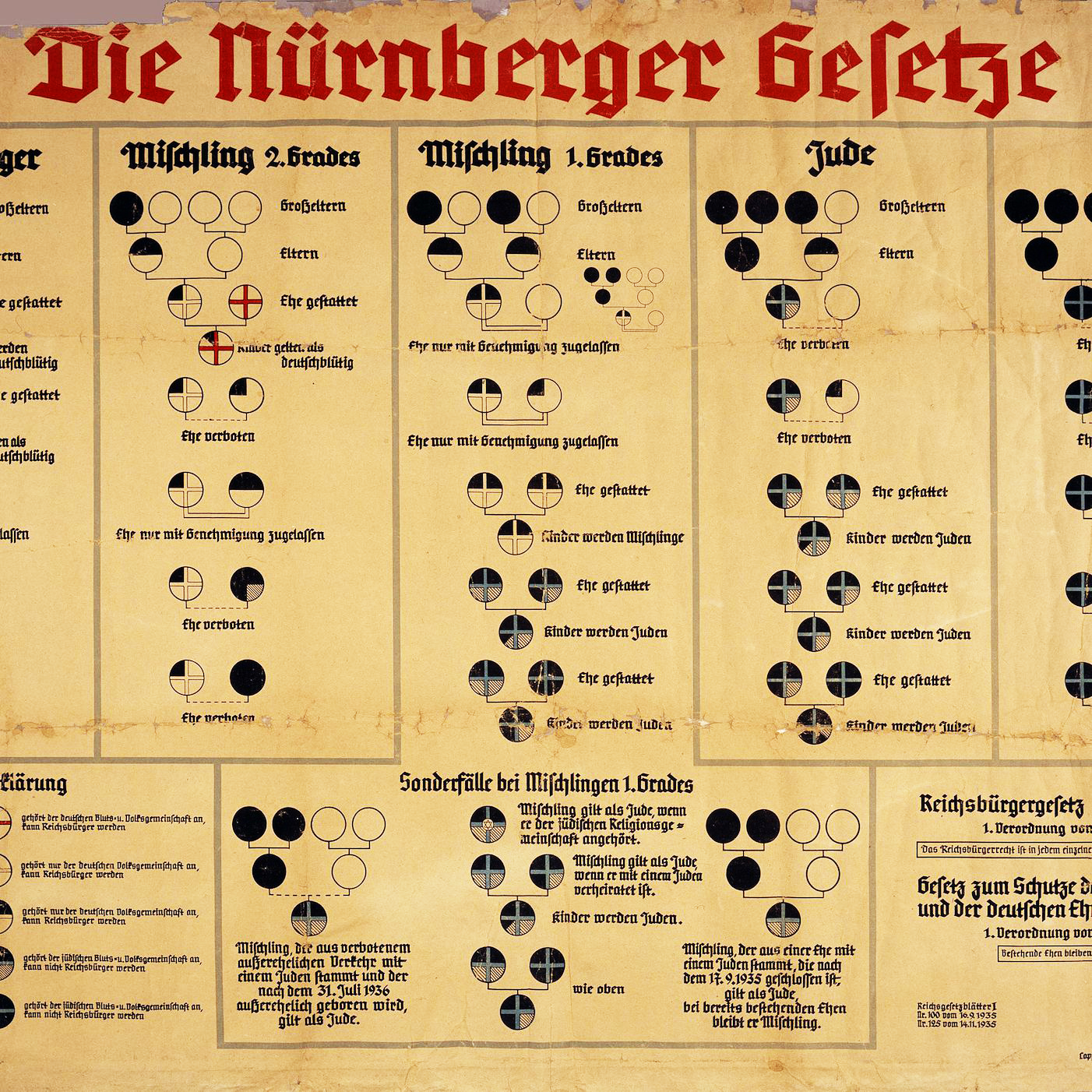
Nuremberg race laws imposed on September 15, 1935
Nuremberg race laws imposed: On this day in 1935, German Jews are stripped of their citizenship, reducing them to mere “subjects” of the state.
After Hitler’s accession to the offices of president and chancellor of Germany, he set about the task of remaking his adopted country (Hitler had to pull some strings even to be eligible for office, as he was Austrian by birth) into the dream state he imagined. But his dream was soon to become a nightmare for many. Early on in his reign, the lives of non-Jewish German citizens were barely disrupted. But not so for Hitler’s “enemies”. Hitler’s racist ideology, which elevated those of “pure-blooded” German stock to the level of “masters” of the earth, began working itself out in vicious ways.
Within the first year of Hitler’s rule, German Jews were excluded from a host of high-profile vocations, from public office to journalism, radio, theater, film, and teaching-even farming. The professions of law and medicine were also withdrawn slowly as opportunities. “Jews Not Welcome” signs could be seen on shop and hotel windows, beer gardens, and other public arenas. With the Nuremberg Laws, these discriminatory acts became embedded in the culture by fiat, making them even more far-reaching. Jews were forbidden to marry “Aryans” or engage in extramarital relations with them. Jews could not employ female Aryan servants if they were less than 35 years of age. Jews found it difficult even to buy food, as groceries, bakeries, and dairies would not admit Jewish customers. Even pharmacies refused to sell them medicines or drugs.
What was the outside world’s reaction? Because unemployment had dropped precipitously under Hitler’s early commandeering of the economy, and the average German felt renewed hope and pride, the face of Germany seemed brighter, more at peace with itself. While some foreign visitors, even some political opponents within Germany itself, decried these racist laws and practices, most were beguiled into thinking it was merely a phase, and that Hitler, in the words of former British Prime Minister Lloyd George, was “a great man”.
History.com / Wikipedia / Encyclopedia Britannica / USHMM.org / Jewish Virtual Library / National Archives.gov
/ Nuremberg race laws imposed on September 15, 1935 (YouTube) 
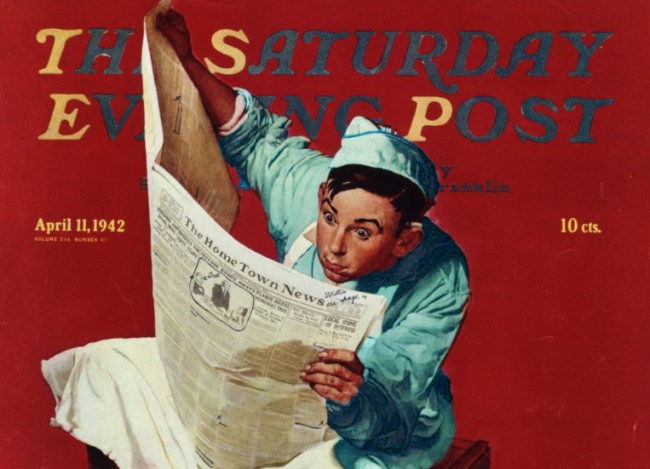
Understanding Military Terminology - National Incident Management System
(DOD) A national crisis response system that provides a consistent, nationwide approach for federal, state, local, and tribal governments; the private sector; and nongovernmental organizations to work effectively and efficiently together to prepare for, respond to, and recover from domestic incidents, regardless of cause, size, or complexity.
Also called NIMS.
Joint Publications (JP 3-41) Chemical, Biological, Radiological, and Nuclear Response
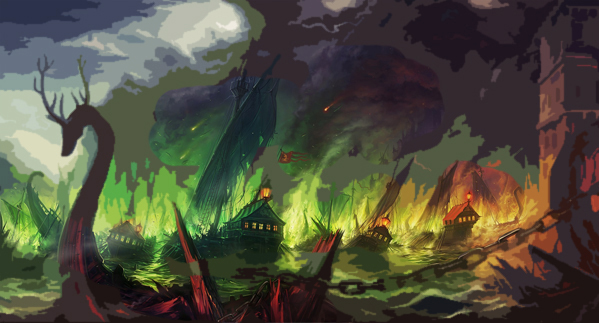
The Old Salt’s Corner
“Fire and Ice”
Some say the world will end in fire,
Some say in ice.
From what I've tasted of desire
I hold with those who favour fire.
But if it had to perish twice,
I think I know enough of hate
To say that for destruction ice
Is also great
And would suffice.
~ Robert Frost

“I’m Just Sayin”
“Try again, fail again. Fail better.”
“We are all born mad. Some remain so.”
“All of old.
Nothing else ever.
Ever tried.
Ever failed.
No matter.
Try again.
Fail again.
Fail better.”
~ Samuel Beckett

“Thought for the Day”
“God asks no man
whether he will accept life.
That is not the choice.
You must take it.
The only question is how.”
“There are more quarrels smothered
by just shutting your mouth,
and holding it shut,
than by all the wisdom in the world.”
“I can forgive, but I cannot forget,
is only another way of saying,
I will not forgive.
Forgiveness ought to be like a canceled note
torn in two, and burned up,
so that it never can be shown against one.”
~ Henry Ward Beecher

“What I Learned”
“There are three types of people in this world:
the ones who keep you alive,
the ones who would otherwise cause you to die,
and the ones who somehow manage to do both at the same time.”
“There are three types of people in this world:
Those who get things done,
hose who watch things getting done,
and those who wonder what's going on.”
“There are three types of people in this world:
the ones who can count,
and those who can't.”
~ Anonymous

Second Hand News (Links to Articles from Week 37 - September 09, 2019 - September 15, 2019)
 Special Sept. 11 edition: The truth about the 9/11 attacks still in question 18 years later
• 'Do you really want me to rule': Gorsuch argues Supreme Court should not dictate everyone's life
Special Sept. 11 edition: The truth about the 9/11 attacks still in question 18 years later
• 'Do you really want me to rule': Gorsuch argues Supreme Court should not dictate everyone's life
Justice Department Inspector General Michael Horowitz inspector general expected to find Trump campaign aide Carter Page FISA warrants were illegally obtained
• 'Hillary Clinton, part two': Democrats fear that Biden could be a ghost of losers past
• Rise of lung illness bolsters calls for banning e-cigarettes
Editor's Picks:
Secret Service arrested El Paso shooting 'hero' as he was about to be honored by Trump at White House
• Gun sales surge 15%, driven by self-protection and Pelosi-Schumer demand for limits
• Evil itself': 480-pound wheelchair-bound pedophile sentenced to 270 years for torturing small girls in motels
Washington Examiner
 The return of shock and awe: U.S. warplanes led by F-35 stealth jets drop 40 TONS of laser-guided bombs on 'ISIS infested Iraqi island' to destroy terrorist stronghold and stop flow of fighters from Syria / After the Towers fell: Incredible Ground Zero images capture the iron workers, firefighters and a geologist who toiled for 12-hour shifts amid the rubble, ruins and remains left in the wake of 9/11
• After the Towers fell: Incredible Ground Zero images capture the iron workers, firefighters and a geologist who toiled for 12-hour shifts amid the rubble, ruins and remains left in the wake of 9/11
• Hundreds gather at Ground Zero to commemorate the 18th anniversary of 9/11 that took 2,977 lives
The return of shock and awe: U.S. warplanes led by F-35 stealth jets drop 40 TONS of laser-guided bombs on 'ISIS infested Iraqi island' to destroy terrorist stronghold and stop flow of fighters from Syria / After the Towers fell: Incredible Ground Zero images capture the iron workers, firefighters and a geologist who toiled for 12-hour shifts amid the rubble, ruins and remains left in the wake of 9/11
• After the Towers fell: Incredible Ground Zero images capture the iron workers, firefighters and a geologist who toiled for 12-hour shifts amid the rubble, ruins and remains left in the wake of 9/11
• Hundreds gather at Ground Zero to commemorate the 18th anniversary of 9/11 that took 2,977 lives
Donald Trump slams 'boneheads' at Federal Reserve and says interest rates should be 'zero, or less' - meaning you would PAY the bank to hold your savings
• Trump celebrates as BOTH candidates he endorsed WIN their North Carolina special elections: President marks a 'big night for the Republican Party'
• Russia warns it has 'no expectation' of any improvement in relations with the U.S. after Trump sacked his national security advisor John Bolton
iCoconut: Apple fans are convinced the iPhone 11 looks like a bowling ball, a hob and a COCONUT thanks to its three rear-facing cameras
• Uber lays off 435 employees from its engineering and technology teams after $5.2billion loss as California Senate approves bill regulating gig economy
• Mother-to-be is left shocked to see a 'devil baby' during her scan when her unborn daughter opened her eyes and flashed a terrifying 'grin'
Daily Mail UK

Mr. Answer Man Please Tell Us: Why is Winnie the Pooh Called a Pooh?
Why is Winnie called a Pooh rather than a bear? Given that most children (and grown-ups, for that matter) have a different idea of what a Pooh is, how has the name stuck?
The original Winnie was female
Finding Winnie: The True Story of the World's Most Famous Bear details the rich history of the female black bear cub named Winnie who would become the inspiration for the classic children's character. During World War I, Winnie was purchased by Canadian veterinarian Harry Coleburn, who named the cub after his home city of Winnipeg. Winnie became a regiment mascot during Coleburn's months of battlefield training. But when he was deployed to France, Coleburn realized he could no longer keep Winnie safe, and brought her to the London Zoo who looked after the cub for the rest of the war, according to WBUR.
It was at the London Zoo when author A.A. Milne came across Winnie with his son Christopher Robin Milne (whose name would also be used in the children's books.) Christopher was enamored by the cub and named his own teddy bear after her. The two would become the inspiration for the characters of Winnie the Pooh and Christopher Robin in Milne's iconic series.
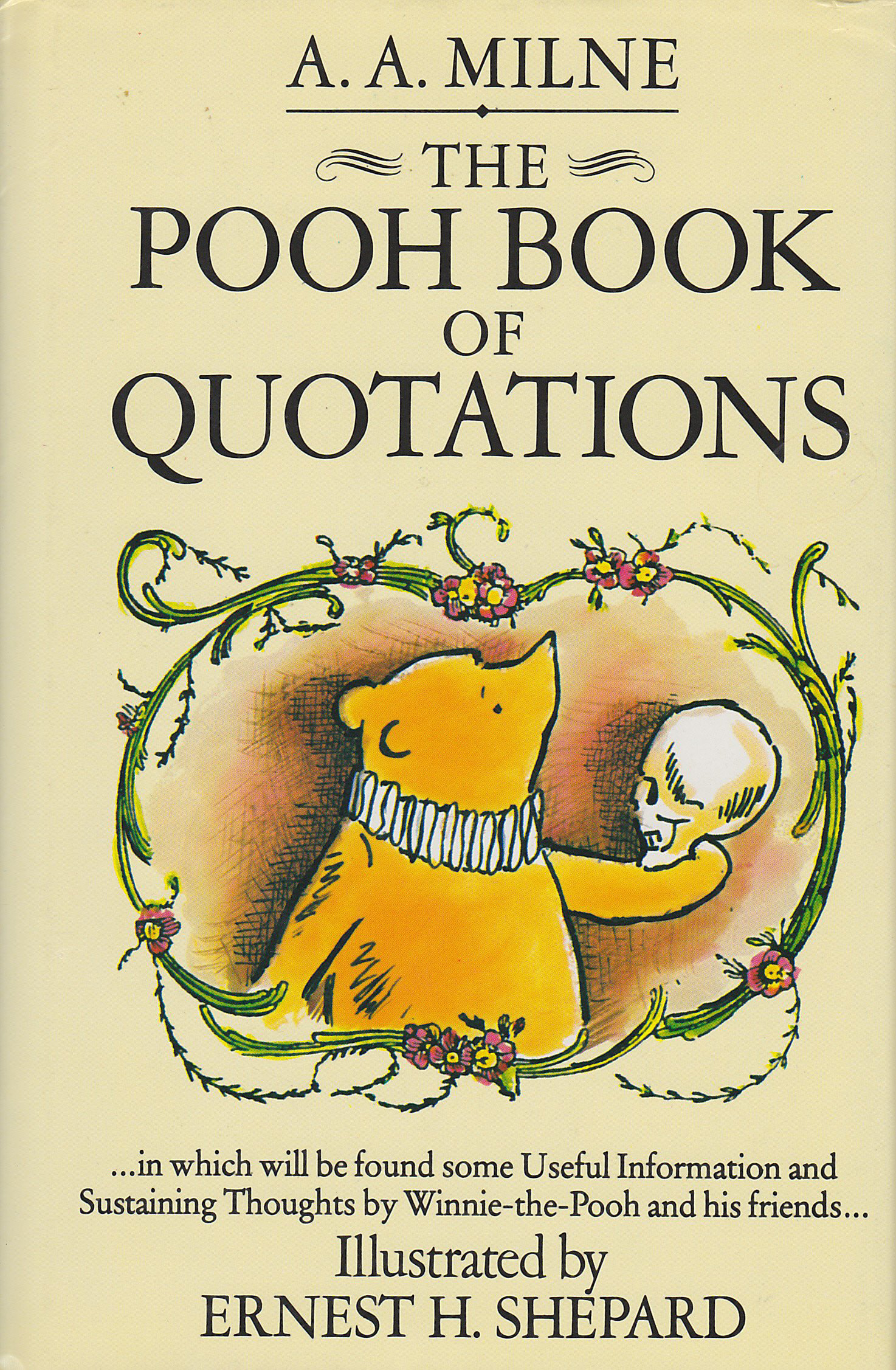
The second half of the name comes from a swan
Young Christopher Robin named a swan “Pooh”, A.A. Milne explained in his 1924 book When We Were Very Young.
“This is a very fine name for a swan, because, if you call him and he doesn't come (which is a thing swans are good at), then you can pretend that you were just saying 'Pooh!' to show how little you wanted him”, Milne wrote before the book.
The real-life Pooh would lend his name to a swan in that book and later to Winnie the Pooh.
Pooh was first published in a newspaper
The first appearance of the character of Winnie the Pooh was on Dec. 24, 1925, according to the BBC. A story called “The Wrong Sort of Bees” appeared in the London Evening News.

You can visit (the stuffed bear) Winnie
For Winnie the Pooh super fans, it might be worth a trip to the main branch of the New York Public Library. Here you can see the toys that Christopher Robin played with that inspired Pooh, Tigger, Eeyore, Piglet and Kanga. They are occasionally given professional conservation treatment.
The real Christopher Robin opened a bookshop
It may come as no surprise that Christopher Milne grew up to be a book lover himself. In 1951, he moved from London to southwest England to set up Harbour Bookshop, according to the BBC. He retired in 1983, and the shop closed in 2011.
ABC Los Angeles
• CBC Canada
• Encyclopedia Britannica
• Quora
• Wikipedia

NAVSPEAK aka U.S. Navy Slang
FTN: Fuck the Navy (common epithet used when complaining about naval policies or regulations). Often scrawled on the walls of toilet stalls by sailors who have been assigned to clean it for a reason. Also can refer to “Free The Nukes”, referring to sailors in the nuclear power field. Also refers to a mythical rate or ship type an “FTN Striker” says he/she is trying to get in (i.e. Fleet Tug-Nuclear, Fire Technician-Nuclear). Also stands for “Fun Time Navy” around higher chain of command to save face in front of said chain of command, yet “secretly” means “Fuck the Navy”. In nuclear commands, can sometimes be seen as KEY when over-nuked (the last letters of the same three words are used).
FTN Striker: Sailor whose stated goal/desire is to get discharged.
F.U.B.A.R.: Fouled up beyond all repair, Fucked up beyond all recognition. (Foobar).
F.U.B.I.J.A.R.: Fuck You Buddy, I'm Just A Reservist.
F.U.B.I.S: “Fuck You Bitch I'm Short:” Slogan indicating lack of care since the one uttering it or wearing it will be leaving soon.
Fuhgowee's: Code word for ditching work and going home at lunch time, so as not to be suspected by PO1, Chiefs, etc (used in Newport News Drydock).
Sailor 1: “What are you having for chow?”
Sailor 2: “Fuhgowee burger sandwiches.”
FUNGUS: Fuck You, New Guy, You Suck.
F.U.P.A. (pronounced “foop-uh”): Fat Upper Pelvic Area: The buldge that protrudes from ill-fitting pants worn by an overweight sailor, or by extension, the sailor him- or herself. (When describing a female, it may stand specifically for “Fat Upper Pussy Area”; when describing a male, “Fat Upper Penis Area.”)
Wiktionary.org

Just for you MARINE
Foxhole: Fighting hole as termed by the Army and Marines of the past, no longer appropriate for Marine use. “Fighting hole”, “firing hole”, and “Forward Firing Position” should be considered.
FRAGO: FRAGmentary Order, an addendum to published operational orders.
FRO: Family Readiness Officer.
Frock: To be authorized to wear the next higher grade before promotion, confers authority but not pay grade.
Frock You: Response to an inappropriate request to be promoted to a Marine's selected rank, ahead of their scheduled promotion.
Wikipedia.org
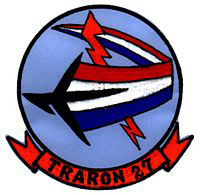
Naval Aviation Squadron Nicknames
VT-27 Training Squadron (VT-27) - nicknamed the “Boomers”
United States Navy - Naval Air Station - Texas Coastal Bend - The largest city of the Coastal Bend is Corpus Christi. It includes part of Laguna Madre and North Padre Island, as well as Mustang Island: July 11, 1951 - present.

Where Did That Saying Come From?

“Cleanliness is next to godliness:”
Meaning: Be clean. God likes that.
History: This ancient proverb is said by some to have come from ancient Hebrew writings.
However, its first appearance in English - though in slightly altered form - seems to be in the writings of Francis Bacon.
In his 'Advancement of Learning' he wrote: 'Cleanness of body was ever deemed to proceed from a due reverence to God.'
Near two centuries later John Wesley in one of his sermons indicated that the proverb was already well known in the form we use today.
Wrote Wesley: 'Slovenliness is no part of religion.'Cleanliness is indeed next to Godliness.'
From “Morris Dictionary of Word and Phrase Origins” by William and Mary Morris (HarperCollins, New York, 1977, 1988).
There are a couple more details in “Random House Dictionary of Popular Proverbs and Sayings” by Gregory Y. Titelman (Random House, New York, 1996):
“According to the fourteenth edition of 'Brewer's Dictionary of Phrase and Fable,' it is an old Hebrew proverb used in the late 2nd century by Rabbi Phinehas ben-Yair. First attested in the United States in the 'Monthly Anthology and Boston Review'. The proverb is found in varying forms.”
Phrases.org.uk

Science & Technology

Gravitational waves leave a detectable mark, physicists say
• Generating multiphoton quantum states on silicon
• Assessing battery performance: Compared to what?
• Color vision found in fish that live in near darkness
• Plants and the art of microbial maintenance
• Peering into the past, scientists discover bacteria transformed a viral threat to survive
Phys.org / MedicalXpress / TechXplore

Bizarre News (we couldn’t make up stuff this good - real news story)
Five Weird Things You Didn't Know About Chernobyl The Chernobyl nuclear power plant exploded more than three decades ago, in 1986.
While most people know the general story — that due to human error, the nuclear reactor exploded and unleashed radioactive material across Europe — few know the nitty-gritty details. Here are five weird facts you probably didn't know about Chernobyl. [Images: Chernobyl, Frozen in Time]
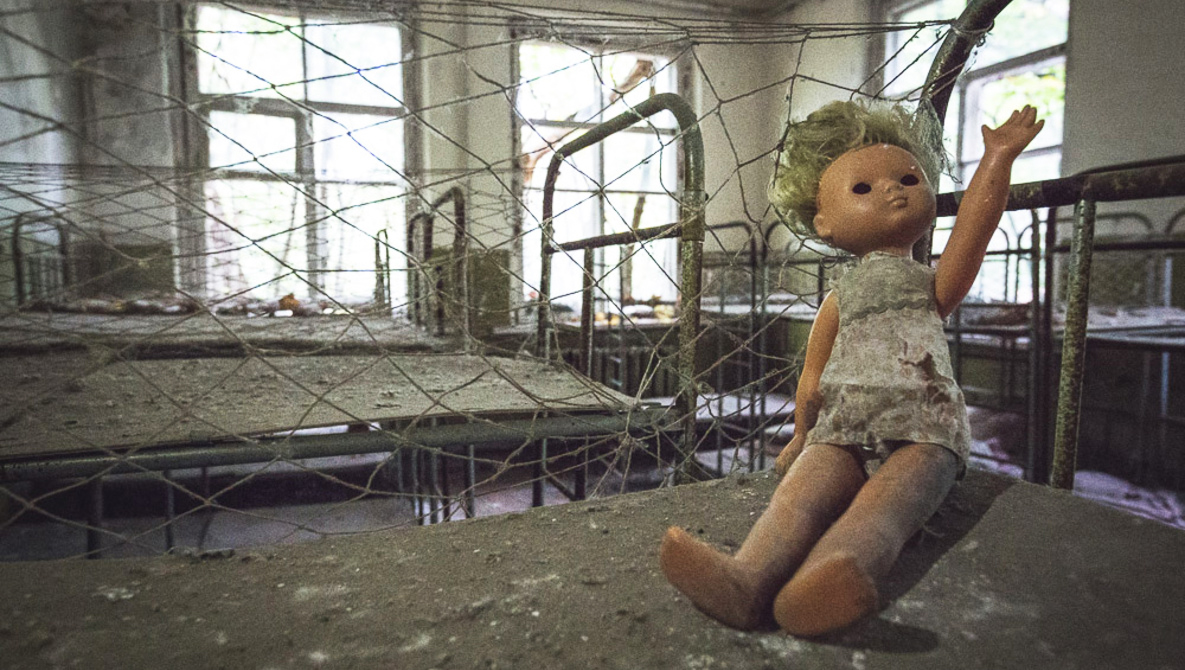
1. Similar to Hiroshima
About 30,000 people were near Chernobyl's reactor when it exploded on April 26, 1986. Those exposed to the radiation are thought to have received about 45 rem (rem is a unit of radiation dosage), on average, which is similar to the average dose received by survivors after the atomic bomb was dropped on Hiroshima in 1945, according to the book "Physics for Future Presidents: The Science Behind the Headlines" (W. W. Norton & Company, 2008) by Richard Muller, a professor emeritus of physics at the University of California, Berkeley.
While 45 rem is not enough to cause radiation sickness (which usually occurs at about 200 rem), it still increases the risk of cancer by 1.8%, Muller wrote. “That risk should lead to about 500 cancer deaths in addition to the 6,000 normal cancers from natural causes.”
However, a 2006 estimate from the International Atomic Energy Agency (IAEA), which is associated with the United Nations, calculated much higher cancer fatalities. The IAEA looked at the total distribution of the radiation, which reached across Europe and even to the United States, and estimated that the cumulative radiation dose from Chernobyl was about 10 million rem, which would have led to an additional 4,000 cancer deaths from the accident, Muller wrote.
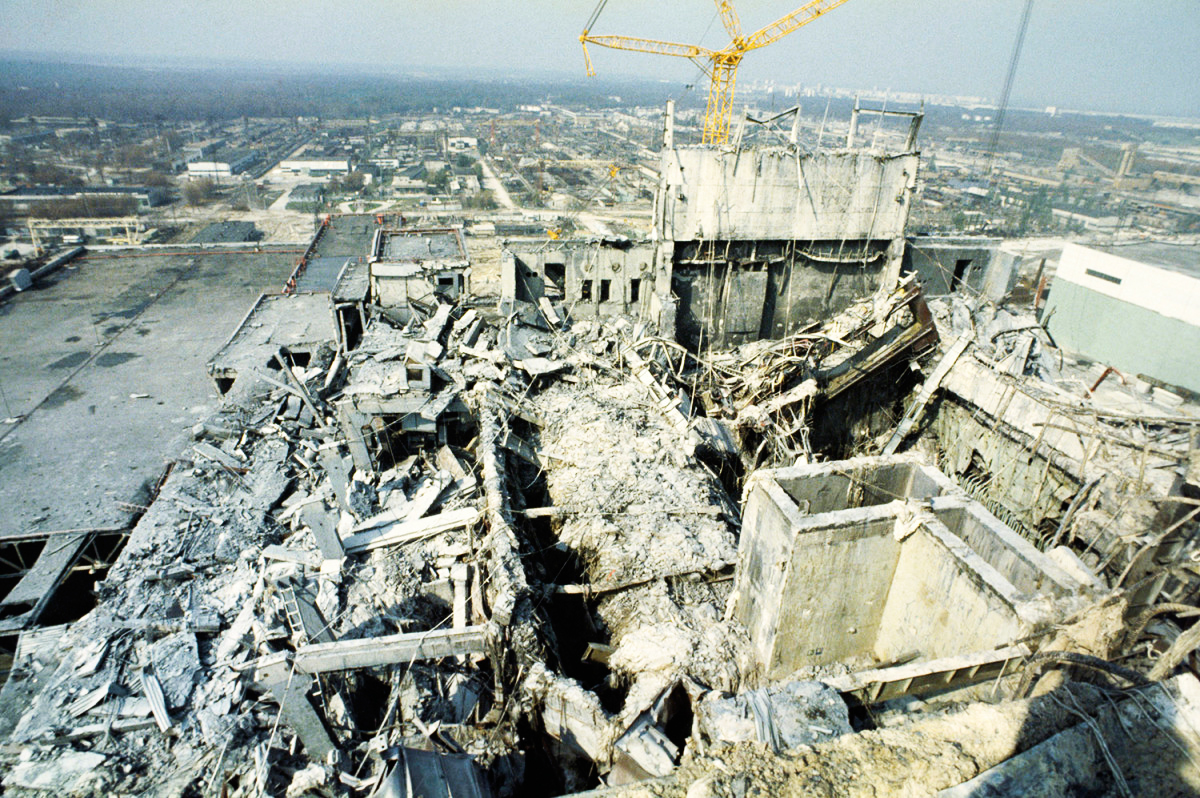
2. Greatest harm ended within weeks
The initial blast was enormous, but the greatest harm from the radiation happened within the first few weeks. You can think of radiation as fragments that fly outward as a nucleus explodes, like shrapnel from a bomb, Muller wrote.
Just like popped bubble wrap, each nucleus can explode and release radiation only once. Just 15 minutes after the Chernobyl explosion "the radioactivity had dropped to one-quarter of its initial value; after 1 day, to one-fifteenth; after 3 months, to less than 1%," Muller wrote.
“But there is still some left, even today," he noted. "Much of the radiation literally went up in smoke, and only the radiation near the ground affected the population.”
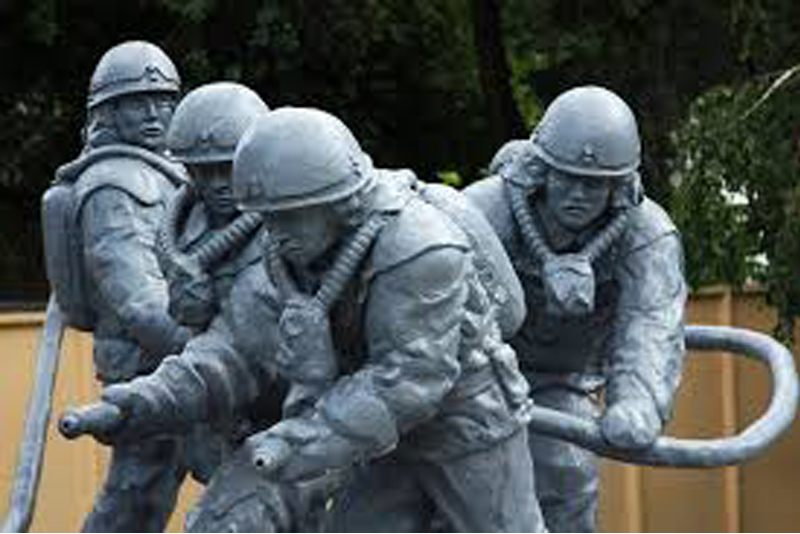
3. Dozens of firefighters died
The Chernobyl explosion not only released a lot of radiation; it also started a fire at the power plant. The firefighters who rushed in to stop the flames were exposed to high levels of radiation, and dozens died from radiation poisoning, Muller wrote.
These firefighters were exposed to over 1 quadrillion gammas each. But what does that mean?
Gamma rays - a penetrating kind of radiation that is released from nuclear weapons, dirty bombs and reactor explosions - is like an extremely energetic X-ray. There are about 10 trillion gamma rays in every 1 rem of radiation, Muller wrote.
A person who gets a whole-body dose of 100 rem probably won't notice, as our systems can repair most of this damage without making a person sick. At 200 rem, a person can develop radiation poisoning. Patients who received chemotherapy sometimes experience this type of sickness, leading to side-effects such as hair loss and feeling nauseated and listless. (This nausea is caused, in part, by the body feverishly working to fix the damage caused by the radiation, so it cuts back on other activities, such as digestion, Muller wrote.)
People hit with 300 rem have a good chance of dying unless they get immediate treatment, like a blood transfusion, Muller wrote.
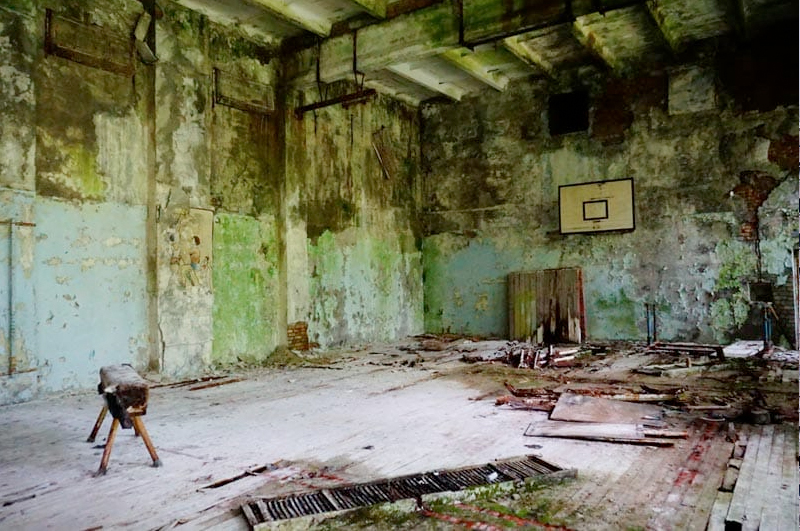
4. There was no containment building
Chernobyl didn't have an important safety measure in place: a containment building.
A containment structure is a gas-tight shell that surrounds a nuclear reactor. This shell, which is usually dome-shaped and made of steel-reinforced concrete, is designed to confine fission products that may be released into the atmosphere during an accident, according to the U.S. Nuclear Regulatory Commission.
If there had been a containment building at Chernobyl, according to Muller's book, “the accident may very well have caused virtually no deaths”.

5. There's wildlife there now
The Chernobyl area was evacuated following the explosion; once humans left, wildlife moved in.
The numbers of moose, roe deer, red deer and wild boar living in the exclusion zone are similar to population numbers in nearby uncontaminated nature reserves, a 2015 study found. Wolves are doing especially well, with a population that is seven times the size of wolf populations in neighboring reserves, the study researchers found.
"This doesn't mean radiation is good for wildlife, just that the effects of human habitation - including hunting, farming and forestry - are a lot worse”, Jim Smith, the study's observation team coordinator and a professor of environmental science at the University of Portsmouth in the United Kingdom, said in a statement.
However, other scientists pointed out that wildlife levels at Chernobyl are lower than those at other protected regions in Europe, indicating that the radiation is still affecting the area.
• 15 Secretive Places You Can Now See on Google Earth (And 3 You Can't)
• Chernobyl Nuclear Disaster 25 Years Later (Infographic)
• Lessons From 10 of the Worst Engineering Disasters in US History
Live Science (05/09/2019) 

Second Hand News (Links to Articles from Week 37 - September 09, 2019 - September 15, 2019) - Part Deux
 CORRUPTION CHRONICLES: Judicial Watch: Federal Judge Criticizes State and Justice Departments on Clinton Email Cover-Up
• Investigating the Investigators:’ Expect Impeachment Push - Because the Radical Left Has Taken Control of the House!
• Judicial Watch Sues Virginia Lt. Governor Justin Fairfax for Documents on Rape Allegations
CORRUPTION CHRONICLES: Judicial Watch: Federal Judge Criticizes State and Justice Departments on Clinton Email Cover-Up
• Investigating the Investigators:’ Expect Impeachment Push - Because the Radical Left Has Taken Control of the House!
• Judicial Watch Sues Virginia Lt. Governor Justin Fairfax for Documents on Rape Allegations
Media Fails to Note 6 Murder Suspects are Illegal Immigrants, MS-13 Gangbangers
• controversial Minnesota congresswoman Democrat Ilhan Omar Declares Support for Terrorist Financier’s Company in Her Native Somalia
• The Untold Story of the Awan Bros/House Democrats I.T. Scandal
Judicial Watch
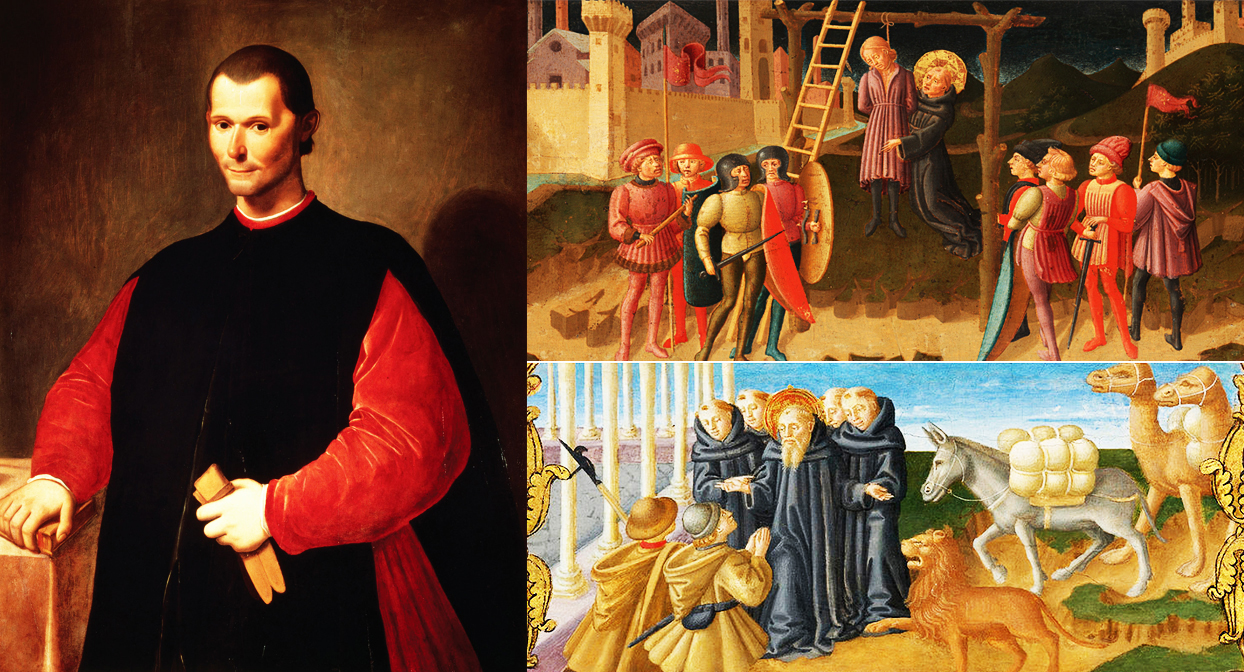 The Garments of Court and Palace: Machiavelli and the World That He Made
The Garments of Court and Palace: Machiavelli and the World That He Made
 2 of 4.
2 of 4.
 3 of 4.
3 of 4.
 4 of 4.
4 of 4.

Ball of Collusion: The Plot to Rig an Election and Destroy a Presidency Hardcover
 2 of 12.
2 of 12.
 3 of 12.
3 of 12.
 4 of 12.
4 of 12.
 5 of 12.
5 of 12.
 6 of 12.
6 of 12.
 7 of 12.
7 of 12.
 8 of 12.
8 of 12.
 9 of 12.
9 of 12.
 10 of 12.
10 of 12.
 11 of 12.
11 of 12.
 12 of 12.
12 of 12.
 John Batchelor (09/09/2019)
John Batchelor (09/09/2019)


SONG FACTS
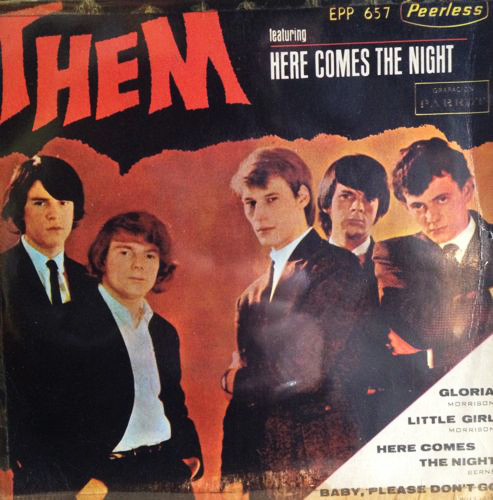
“Here Comes The Night” - Them
Album: Here Comes The Night (1965)
Released 1965 
This song was written by Bert Berns and was released as a single in 1965 with “All For Myself”;  as the B-side. It was the biggest hit for Them, who were from Belfast, Ireland but still considered part of the “British Invasion”.
as the B-side. It was the biggest hit for Them, who were from Belfast, Ireland but still considered part of the “British Invasion”.
Van Morrison was Them's lead singer. He left the band in 1966 to pursue a solo career, and Them changed their name to The Belfast Gypsies and released one album before reverting back to their original name. They released four more albums before splitting.
Bert Berns (a.k.a. Bert Russell) was a talented songwriter and producer whose life was tragically cut short in 1967 at the age of 38 by a fatal heart attack.
among his writing credits are “Twist And Shout”  (The Isley Brothers
(The Isley Brothers  , The Beatles
, The Beatles  ),
“Hang On Sloopy”
),
“Hang On Sloopy”  (The McCoys),
“Piece Of My Heart” (Erma Franklin
(The McCoys),
“Piece Of My Heart” (Erma Franklin  , Janis Joplin
, Janis Joplin  ), and
“Tell Him”
), and
“Tell Him”  (The Exciters).
(The Exciters).
His production credits include Morrison's “Brown Eyed Girl”  and “Under The Boardwalk”
and “Under The Boardwalk”  by The Drifters.
by The Drifters.
Them, official website / Billboard / All Music / Song Facts / Them
Image: “Here Comes The Night (album)” by Them

Trivia
● Most art students learn this list: the three primary colors.
Answer to Trivia
● What was the first state to enter the union after the original thirteen?
Answer to Trivia
● When California became a state in 1850, what was the closest neighboring state?
Answer to Trivia
● Can you name the two longest rivers in Europe? The longest river in Europe is in the former USSR, and the second longest river in Europe is not.
Answer to Trivia

A Test for People Who Know Everything
From the Jeopardy Archives Category - “ARMY, NAVY, AIR FORCE OR MARINES” ($200)
“Secretary of State Colin Powell.”
● Answer for People Who Do Not Know Everything, or Want to Verify Their Answer Biography
From the Jeopardy Archives Category - “ARMY, NAVY, AIR FORCE OR MARINES” ($400)
“Iwo Jima flag raiser Ira Hayes.”
● Answer for People Who Do Not Know Everything, or Want to Verify Their Answer Arlington Cemetery
From the Jeopardy Archives Category - “ARMY, NAVY, AIR FORCE OR MARINES” (DD $1,000)
“Cold War figure Francis Gary Powers.”
● Answer for People Who Do Not Know Everything, or Want to Verify Their Answer Office of the Historian.gov
Answer to Last Week's Test
From the Jeopardy Archives Category - “HELLO, SUCKER!” ($200)
“At the tequila bar, lick the salt off your hand, drink the shot, then suck on this.”
● Answer: Lemon (or Lime). Quora
From the Jeopardy Archives Category - “HELLO, SUCKER!” ($400)
“Completes the title of an 1847 novel featuring 'a gush of blood, and a hideous sucking noise:' 'Varney the...'”
● Answer: Vampire. National Geographic
From the Jeopardy Archives Category - “HELLO, SUCKER!” ($800)
“H. Cecil Booth's version of this contraption was used to clean up Westminster Abbey for a coronation in 1902.”
● Answer: Vacuum Cleaner. The Atlantic

Joke of the Day
“A Wife Making Breakfast”

A Wife Making Breakfast
A wife was making a breakfast of fried eggs for her husband.
Suddenly, her husband burst into the kitchen. “Careful”, he said, “CAREFUL! Put in some more butter!”
“Oh my gosh! You're cooking too many at once.”
“TOO MANY! Turn them! TURN THEM NOW!”
“We need more butter.”
“Oh my gosh! WHERE are we going to get MORE BUTTER?”
“They're going to STICK! Careful.”
“CAREFUL! I said be CAREFUL! You NEVER listen to me when you're cooking!”
“Never! Turn them!”
“Hurry up!”
“Are you CRAZY? Have you LOST your mind?”
“Don't forget to salt them.”
“You know you always forget to salt them.”
“Use the salt. USE THE SALT! THE SALT!”
The wife stared at him. “What in the world is wrong with you? You think I don't know how to fry a couple of eggs?”
The husband calmly replied, “I just wanted to show you what it feels like when I'm driving.”







































